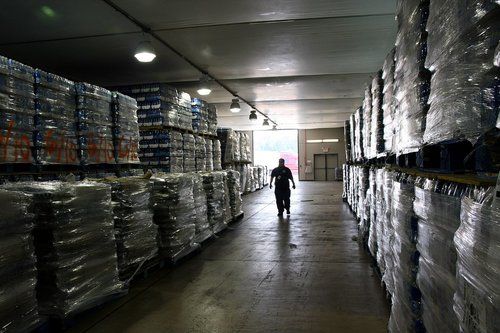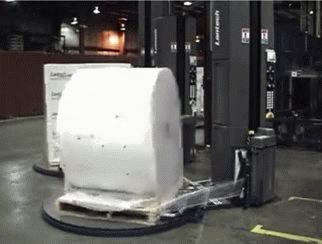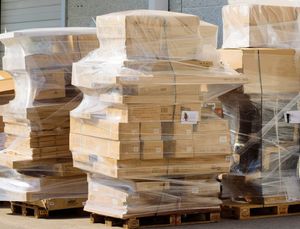The diaphanous material that holds together the containerized world.
To look at a container ship is to see the world as a set of modular units. The ship itself: a gigantic rectangle. Steel containers form an improbable stack of colorful bricks atop the deck, held together with twist-locks and lashing rods. Inside the shipping containers square wooden pallets subdivide the space, a nesting layer of modularity that bundles together smaller boxes and turns items into moveable and trackable units. But between the inner layers of this modular vision of blocks, cubes, and interchangeable units is the diaphanous material that holds together the subcomponents of the containerized world: stretch wrap.

Stretch wrap — sometimes also called stretch film, cling film or pallet wrap — is a thin film of stretchable plastic used to wrap loads for transport and shipping. Stretch wrap provides strength and protection, helping things to get from A to B quickly and at scale. Its low cost, ease of application, and ability to stabilize loads has made it a preferred choice for attaching products to pallets. In 2007 it was estimated that 454 million kilograms (1 billion pounds) of stretch wrap was produced each year, equating to an estimated 3 billion pallets wrapped.

Stretch wrap is now ubiquitous for wrapping and stabilizing palletized loads, but its history and rise to prominence is somewhat murky, with details scattered through industrial product websites and scholarly papers. There isn’t a definitive date when stretch wrap was first used in industrial settings. Lantech, the self-proclaimed “inventors of the stretch wrapper,” was founded by brothers Pat and Bill Lancaster in 1972. As a corporate history of Lantech explains, the Lancasters initially aimed to develop an infrared heating system for shrink wrapping pallets (an alternative palletizing system that involves a loose plastic bag that shrinks to a tight cover when heat is applied). However, the shrink-wrapped bag system had significant limitations at the time, and the brothers hypothesized that stretch wrap — which they initially conceptualized as a kind of rubber band that would stretch around a pallet load — could help to overcome some of these issues.
Read the full story
The rest of this post is for SOW Subscribers (free or paid) only. Sign up now to read the full story and get access to all subscriber-only posts.
Sign up now


